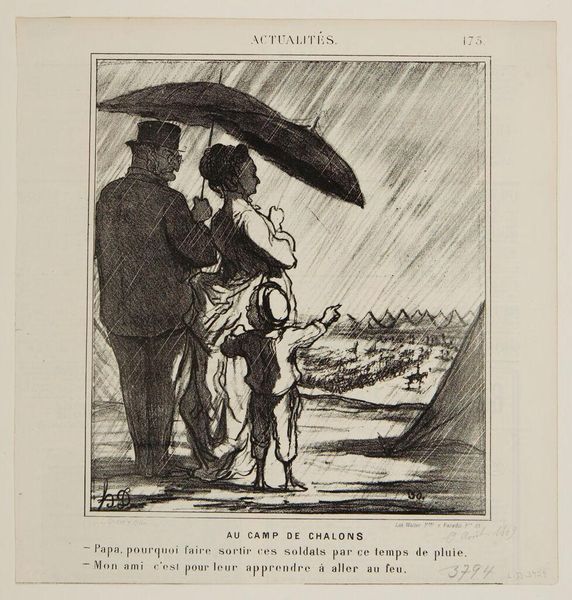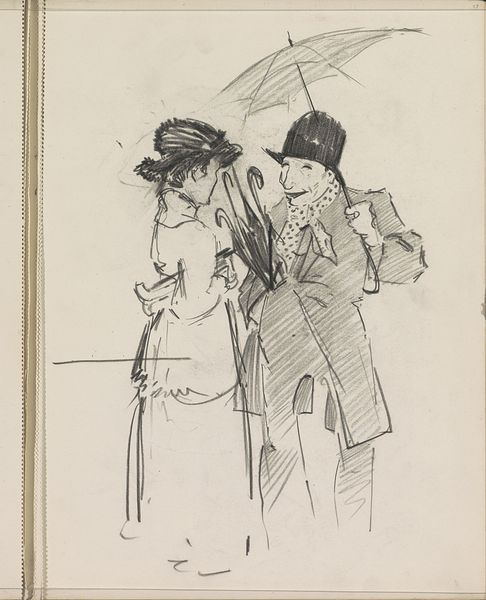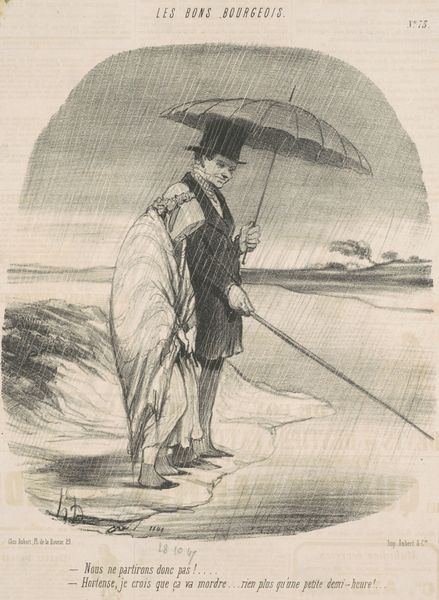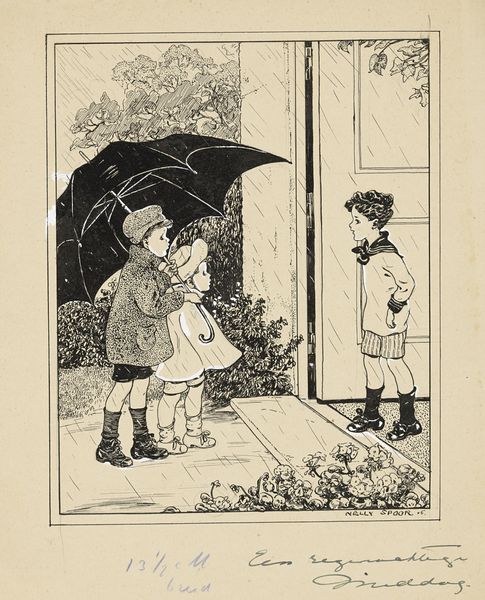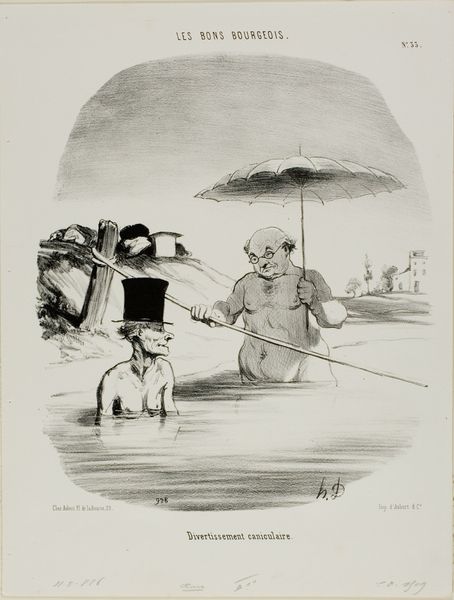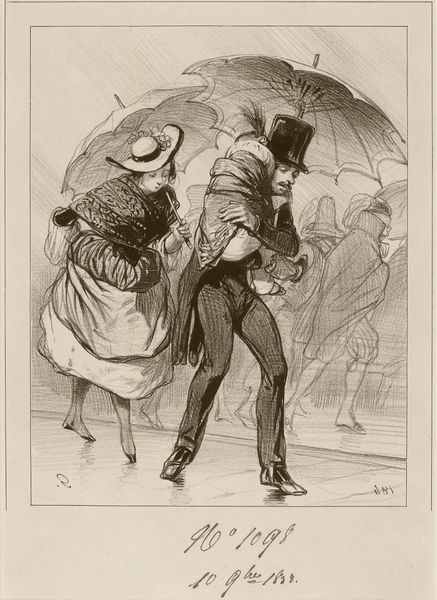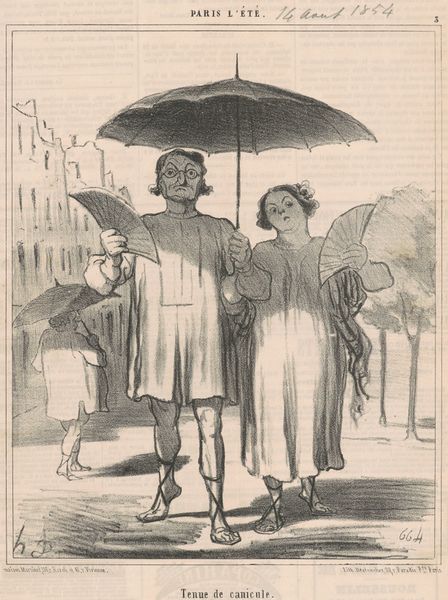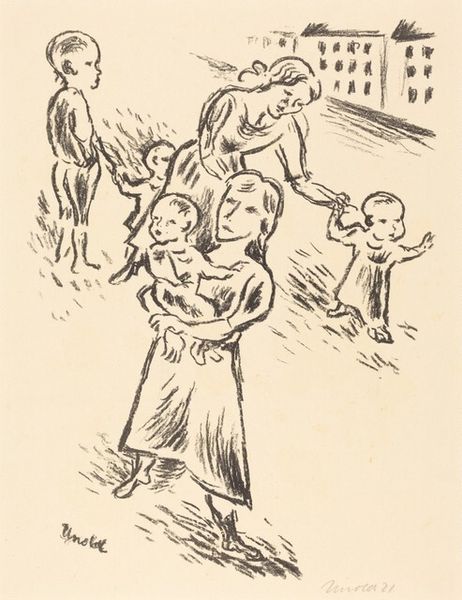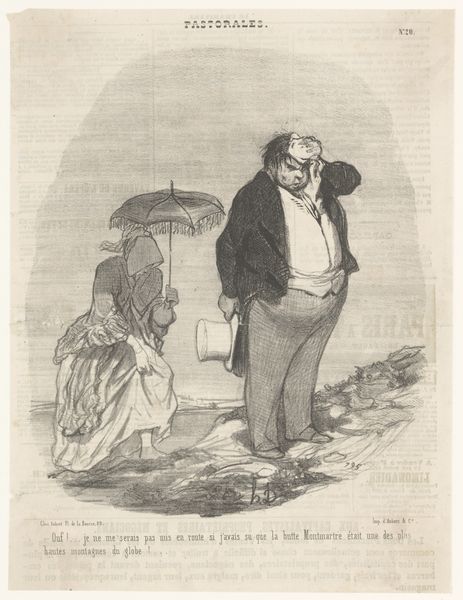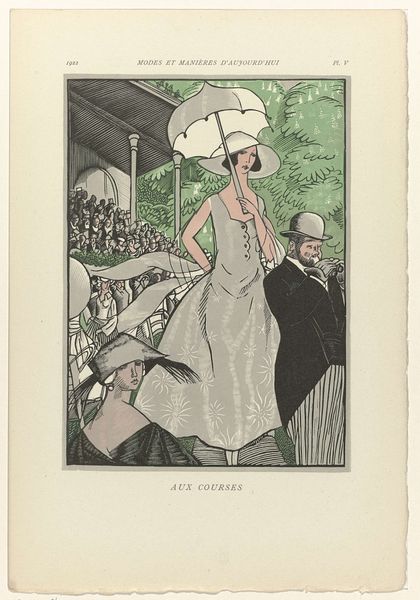
Copyright: National Gallery of Art: CC0 1.0
Editor: This lithograph, "Au Camp de Chalons," was created by Honoré Daumier in 1869. The figures, caught in the rain, seem oblivious to the bleakness, except perhaps for the child, who’s pointing towards a line of distant soldiers. What’s your take on this piece? Curator: Daumier was a master of social commentary, and here, his caricature blends seamlessly with political critique. This print was created during a period of significant political tension in France. Consider the title "Au Camp de Chalons." What does this location evoke for you, knowing this was just before the Franco-Prussian War? Editor: I can only guess that Chalons was a large army camp... Maybe they were seen as unprepared for what came next? Curator: Exactly! The caption translates to “to teach them how to go into the fire.” Is Daumier suggesting the leaders were carelessly sending soldiers to their deaths. Look at how he juxtaposes the comfortable bourgeois family with the barely-visible soldiers; what comment does that juxtaposition make, especially considering class divides at the time? Editor: So he is criticizing the bourgeoisie for being detached from the reality of war, maybe? It sounds like powerful satire that’s very pointed. I’m also curious, is the bad weather of that time relevant at all? Curator: Definitely! Weather serves to evoke how war isn't glamorous: it's grim and uncomfortable and tragic. Thank you, this new reading also shed light on new information on that historical background! Editor: Thanks, it also changed how I'll interpret similar art in the future!
Comments
No comments
Be the first to comment and join the conversation on the ultimate creative platform.
